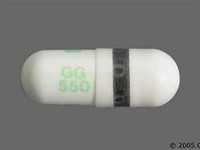Fluoxetine
CLINICAL USE
SSRI antidepressant:Depressive illness Bulimia nervosa Obsessive compulsive disorder
DOSE IN NORMAL RENAL FUNCTION
20–60 mg daily depending on indication
PHARMACOKINETICS
DOSE IN RENAL IMPAIRMENT
GFR (mL/MIN)
DOSE IN PATIENTS UNDERGOING RENAL REPLACEMENT THERAPIES
IMPORTANT DRUG INTERACTIONS
Potentially hazardous interactions with other drugs
ADMINISTRATION
Reconstition
–
Route
Oral
Rate of Administration
–
Comments
OTHER INFORMATION
Accumulation may occur in patients with severe renal failure during chronic treatment (metabolites are excreted renally)

